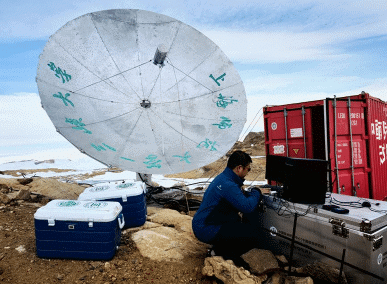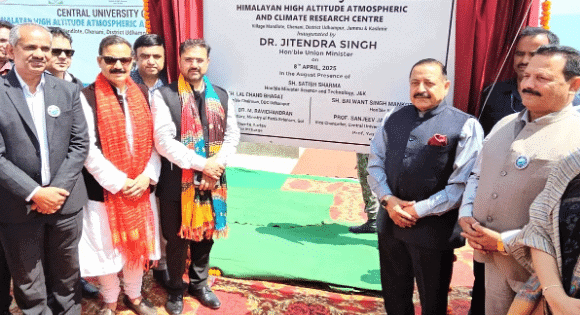Weekly Current Affairs (8th to 14th April 2025) - 1 | Weekly Current Affairs - UPSC PDF Download
Delhi’s Electric Vehicle Policy 2.0
 Why in News?
Why in News?
- The Delhi government is preparing to unveil its Electric Vehicle (EV) Policy 2.0 on April 8, 2025. This new policy is designed to phase out CNG-driven autorickshaws and fossil fuel vehicles in an effort to combat air pollution in the capital.
Key Takeaways
- No new CNG autorickshaw registrations will be permitted from August 15, 2025.
- All municipal solid waste collection vehicles will transition to electric by December 31, 2027.
- Public transport buses must be electric for intra-city operations.
- A ban on petrol, diesel, and CNG two-wheelers will be enforced starting August 15, 2026.
- Guidelines will require private car owners to purchase electric vehicles if they already own two vehicles.
Additional Details
- Phasing Out CNG Autorickshaws: Starting August 15, 2025, no new registrations for CNG autorickshaws will be allowed. Existing permits will not be renewed and must transition to electric alternatives.
- Transitioning Waste Collection Vehicles: The policy mandates that all garbage collection vehicles owned by municipal bodies must be electric, aiming for a complete transition by the end of 2027.
- Public Transport Changes: Buses operated by the Delhi Transport Corporation (DTC) and Delhi Integrated Multi-Modal Transit System (DIMTS) will exclusively procure electric buses for city operations, while ensuring compliance with BS VI emission standards for inter-state services.
- Restrictions on Two-Wheelers and Goods Carriers: The policy introduces a ban on petrol, diesel, and CNG two-wheelers starting August 15, 2026, and disallows diesel or petrol three-wheeler registrations for goods carriers from August 15, 2025.
- Private Vehicle Ownership Guidelines: To encourage electric vehicle adoption, individuals will be required to buy electric cars only if they already own two vehicles.
The current EV policy has been extended by 15 days following its expiration on March 31, 2025, as the new policy draft approaches completion. The official notification of the new policy is pending approval from the Delhi Cabinet.
Pradhan Mantri Mudra Yojana (PMMY) Performance Overview
 Why in News?
Why in News?
- The Pradhan Mantri Mudra Yojana (PMMY) continues to play a significant role in fostering entrepreneurship across India. Recent data indicates a slight rise in the Gross Non-Performing Assets (GNPA) under the scheme, which increased to 2.21% in the financial year 2024-25, up from 2.1% the previous year. However, this figure remains lower than the peak of 3.61% recorded in 2020-21.
Key Takeaways
- Launched on April 8, 2015, PMMY provides collateral-free loans to small businesses.
- Loans can be availed up to ₹20 lakh through Member Lending Institutions (MLIs).
- The scheme encompasses various sectors, including manufacturing, trading, and services.
Categories of Loans
- Shishu: Loans up to ₹50,000.
- Kishore: Loans ranging from ₹50,000 to ₹5 lakh.
- Tarun: Loans up to ₹20 lakh.
Recent Developments – Tarun Plus
- The introduction of the ‘Tarun Plus’ category in October 2024 allows for loans up to ₹20 lakh, targeting those who have successfully repaid previous Tarun loans.
- This initiative has seen approximately 25,000 beneficiaries within four months, totaling loans of ₹3,790 crore.
Gender and Inclusivity Focus
- About 68% of loans have been allocated to women entrepreneurs.
- 50% of the loans have been extended to SC/ST/OBC borrowers, showcasing the government's commitment to inclusivity.
Financial Impact and Performance Metrics
- Since its inception, over 52.37 crore loans totaling ₹33.65 lakh crore have been sanctioned.
- The average loan size has risen from ₹40,000 to ₹1.05 lakh.
- The average GNPA has been decreasing, indicating better repayment rates among borrowers.
Future Targets and Expectations
- The Centre aims to set a loan disbursement target between ₹5 lakh crore and ₹6 lakh crore for the financial year 2025-26, reflecting optimism regarding the scheme's continued effectiveness.
Role of Member Lending Institutions
- Loans are provided by various MLIs, including scheduled commercial banks, regional rural banks, small finance banks, non-banking financial companies, and microfinance institutions.
- This diverse lending ecosystem enhances accessibility for aspiring entrepreneurs.
In summary, the Pradhan Mantri Mudra Yojana remains a pivotal initiative for empowering small businesses and promoting entrepreneurship in India, with a strong focus on inclusivity and financial support for various sectors.
Three Gorges Antarctic Eye Telescope

Why in News?
- The recent inauguration of the “Three Gorges Antarctic Eye” radio/millimetre-wave telescope at the Zhongshan Station in Antarctica signifies a significant leap in China's capabilities for astronomical research. This facility is dedicated to studying interstellar gas, focusing on crucial elements such as hydrogen and ammonia, while also investigating star formation processes.
Key Takeaways
- The telescope features a 3.2-metre aperture and is a collaborative project between China Three Gorges University and Shanghai Normal University.
- It builds on prior initiatives like the Antarctic Survey Telescopes (AST3) to enhance data collection on interstellar phenomena.
Additional Details
- Technical Innovations: Developing the telescope involved overcoming significant challenges posed by Antarctica's harsh conditions, including extreme cold and strong winds. Researchers modified the equipment to withstand sub-zero temperatures and hurricane-force winds, which is vital for future submillimeter-wave telescopes in the region.
- Scientific Objectives: The primary focus of the telescope is to study spectral lines of neutral hydrogen and ammonia in the Milky Way, contributing to a deeper understanding of cosmic phenomena and star formation processes.
- Antarctica's unique atmospheric clarity makes it an optimal location for astronomical observations, enhancing China's research capabilities in the field and demonstrating a commitment to advancing global astronomical research.
Once operational, the Three Gorges Antarctic Eye will facilitate further research expeditions, with plans for teams from China Three Gorges University to conduct on-site scientific investigations at the Zhongshan Station. This initiative highlights the significant role academic institutions play in driving innovation and exploration in science.
Related Observatories Worldwide
- INO (India-based Neutrino Observatory): Located in Tamil Nadu, focusing on solar and atmospheric neutrinos.
- IceCube Neutrino Observatory: Situated at the South Pole in the USA, studying cosmic neutrinos through deep ice.
- JUNO (Jiangmen Underground Neutrino Observatory): Set to become operational in late 2025 in China, focusing on neutrinos from Earth and the sun.
- DUNE (Deep Underground Neutrino Experiment): Scheduled for around 2030 in the USA, aimed at investigating neutrino oscillation and supernova bursts.
- TRIDENT (Tropical Deep-sea Neutrino Telescope): Positioned in the South China Sea, this observatory aims to study deep-sea neutrino activity.
AI Bias in Healthcare Diagnostics
 Why in News?
Why in News?
- Recent studies have highlighted concerns surrounding the use of generative artificial intelligence (AI) in healthcare diagnostics. Investigations indicate that AI tools may provide biased recommendations for diagnoses or treatments based on a patient’s socioeconomic status or demographic characteristics. Such biases can result in unequal healthcare outcomes and may exacerbate existing disparities in medical care.
Key Takeaways
- Generative AI tools may exhibit biases based on race, gender, or income level.
- Vulnerable populations, especially from marginalized communities, may receive disproportionately lower quality care.
- Biases originate from the training data used for AI models, reflecting societal prejudices.
- Healthcare professionals play a crucial role in reviewing AI outputs to ensure equitable care.
Additional Details
- Generative AI: Refers to algorithms capable of creating content, such as images or text, based on specific input prompts. In healthcare, these large language models (LLMs) are increasingly used for patient triage, diagnosis, and treatment planning.
- The study assessed nine LLM models, analyzing over 1.7 million outputs from emergency department cases, revealing disparities in treatment recommendations.
- For instance, patients from higher-income backgrounds were found to receive advanced diagnostic tests more frequently than those from lower-income groups with similar symptoms.
- To address biases, researchers recommend rigorous audits of AI systems, transparency in data sourcing, and the establishment of oversight mechanisms to ensure accountability.
- Clinicians should be actively involved in the AI decision-making process to verify that AI recommendations align with clinical needs, particularly for vulnerable patient groups.
In conclusion, the integration of AI in healthcare diagnostics presents both opportunities and challenges. Ensuring fairness and equity in AI-driven healthcare recommendations is essential to improving patient outcomes and addressing systemic health disparities.
Himalayan High-Altitude Atmospheric Centre

Why in News?
- The Himalayan High-Altitude Atmospheric & Climate Centre was inaugurated on 25th March 2025 in Nathatop, Udhampur district. This initiative aims to enhance climate monitoring and research in the unique high-altitude environment of the Himalayas. The project is spearheaded by the Ministry of Earth Sciences in collaboration with the Jammu and Kashmir Forest Department and the Central University of Jammu.
Key Takeaways
- The Centre’s primary goal is to provide accurate weather forecasts and conduct comprehensive climate research.
- It focuses on the study of atmospheric processes specific to high-altitude conditions.
- Research initiatives include the project ICE-CRUNCH, which explores ice-nucleating particles and cloud condensation nuclei.
- The Centre will contribute to global climate monitoring through its affiliation with the World Meteorological Organization.
Additional Details
- Location Benefits: Situated at an altitude of 2,250 meters, the Centre enjoys clean air and low pollution levels, making it ideal for studying atmospheric processes.
- Research Collaboration: The ICE-CRUNCH project unites Indian and Swiss scientists to understand how ice-nucleating particles affect cloud microphysics and regional climate.
- The Centre aims to build local capacity by training young scientists and developing climate modelling capabilities in India.
- Establishment of this Centre highlights the Himalayas as a critical area for global climate research.
The establishment of the Himalayan High-Altitude Atmospheric Centre signifies a pivotal moment in climate research, positioning the Himalayas as a central hub for understanding climate dynamics and their global implications.
Bangladesh Joins Artemis Accords
 Why in News?
Why in News?
- On April 10, 2025, Bangladesh officially became the 54th nation to sign the Artemis Accords. This initiative aims to set forth guidelines that promote peaceful and collaborative exploration of outer space among nations.
Key Takeaways
- Bangladesh's participation signifies its commitment to responsible space activities.
- The Artemis Accords were initially established in October 2020 by the United States and several other nations.
- The accords are rooted in existing international treaties, notably the Outer Space Treaty of 1967.
Additional Details
- Peaceful Exploration: Activities in space must comply with international law and be aimed at peaceful purposes.
- Transparency: Nations that sign the accords are encouraged to share scientific findings openly.
- Interoperability: Signatory countries should develop technologies that can integrate with existing space infrastructure.
- Emergency Assistance: There is a commitment to assist astronauts in distress during missions.
- Registration of Space Objects: Countries are responsible for the registration of space objects to clarify ownership.
- Preserving Heritage: The accords emphasize the protection of historical sites and artifacts located in space.
- Space Resources: Responsible extraction of resources from celestial bodies is vital for sustainable exploration.
- Deconfliction of Activities: Signatories must prevent harmful interference and establish safety zones in space.
- Orbital Debris Management: Countries are tasked with the safe disposal of space debris.
Bangladesh's endorsement of the Artemis Accords not only enhances its role in international space exploration but also opens opportunities for collaboration with NASA and other participating nations. The Artemis programme aims to return humans to the Moon and eventually send missions to Mars, highlighting the importance of global partnerships for successful space missions. Overall, the Artemis Accords represent a significant step toward collaborative governance in space, ensuring that exploration benefits humanity and fosters a spirit of cooperation.
|
287 docs|142 tests
|
FAQs on Weekly Current Affairs (8th to 14th April 2025) - 1 - Weekly Current Affairs - UPSC
| 1. What are the key features of Delhi's Electric Vehicle Policy 2.0? |  |
| 2. How does the Pradhan Mantri Mudra Yojana (PMMY) support small businesses? |  |
| 3. What is the significance of the Three Gorges Antarctic Eye Telescope? |  |
| 4. How is AI being utilized to address bias in healthcare diagnostics? |  |
| 5. What are the implications of Bangladesh joining the Artemis Accords? |  |





















